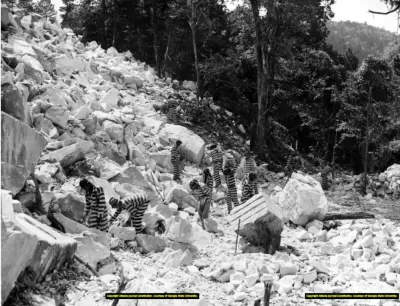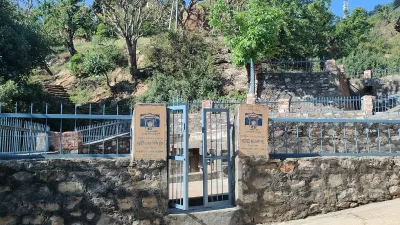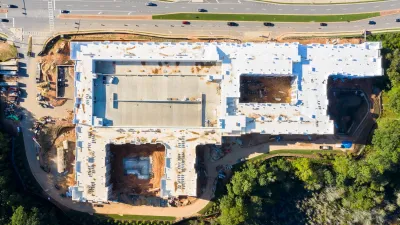Two monuments coming to Atlanta reckon with the city's history of using incarcerated laborers.

The history of Atlanta is set in brick.
It began after the Civil War, when slavery gave way to another form of labor: convict leasing. Black people, many of them children, were arrested for such “crimes” as talking loudly in the company of a white woman or not stepping off the sidewalk when a white person approached. Private companies would then lease these incarcerated people for unpaid labor in inhumane conditions.
“It’s one of those pieces of history that nobody really knows about,” says Donna Stephens, an environmental activist in Atlanta. “There’s so many people that I’ve spoken to that are just in shock about that part of American history. [To them] it’s as if slavery ended and [Martin Luther King Jr.] showed up.”
One of the outfits that profited off convict labor was the Chattahoochee Brick Company in Atlanta. For 30 years, workers there made 200,000 bricks a day—the very bricks that built the city during a formative period. These bricks are throughout downtown and in older buildings and sidewalks, says Douglas A. Blackmon, author of a Pulitzer Prize-winning book on convict leasing. The workers, 30% of whom were children, were whipped, fed rotting food and warehoused in substandard housing. Some were worked to death.
Years later, Atlanta is beginning to reckon with its history of convict labor and the role it has played in not only the city but throughout the South. Plans exist to memorialize the former site of Chattahoochee Brick and at the recently opened Westside Park a few miles away.
Atlanta will be the first city to acknowledge convict labor on a large scale.
FULL STORY: Atlanta Reckons with the Convict Labor that Built the City

Maui's Vacation Rental Debate Turns Ugly
Verbal attacks, misinformation campaigns and fistfights plague a high-stakes debate to convert thousands of vacation rentals into long-term housing.

Planetizen Federal Action Tracker
A weekly monitor of how Trump’s orders and actions are impacting planners and planning in America.

San Francisco Suspends Traffic Calming Amidst Record Deaths
Citing “a challenging fiscal landscape,” the city will cease the program on the heels of 42 traffic deaths, including 24 pedestrians.

Defunct Pittsburgh Power Plant to Become Residential Tower
A decommissioned steam heat plant will be redeveloped into almost 100 affordable housing units.

Trump Prompts Restructuring of Transportation Research Board in “Unprecedented Overreach”
The TRB has eliminated more than half of its committees including those focused on climate, equity, and cities.

Amtrak Rolls Out New Orleans to Alabama “Mardi Gras” Train
The new service will operate morning and evening departures between Mobile and New Orleans.
Urban Design for Planners 1: Software Tools
This six-course series explores essential urban design concepts using open source software and equips planners with the tools they need to participate fully in the urban design process.
Planning for Universal Design
Learn the tools for implementing Universal Design in planning regulations.
Heyer Gruel & Associates PA
JM Goldson LLC
Custer County Colorado
City of Camden Redevelopment Agency
City of Astoria
Transportation Research & Education Center (TREC) at Portland State University
Jefferson Parish Government
Camden Redevelopment Agency
City of Claremont





























